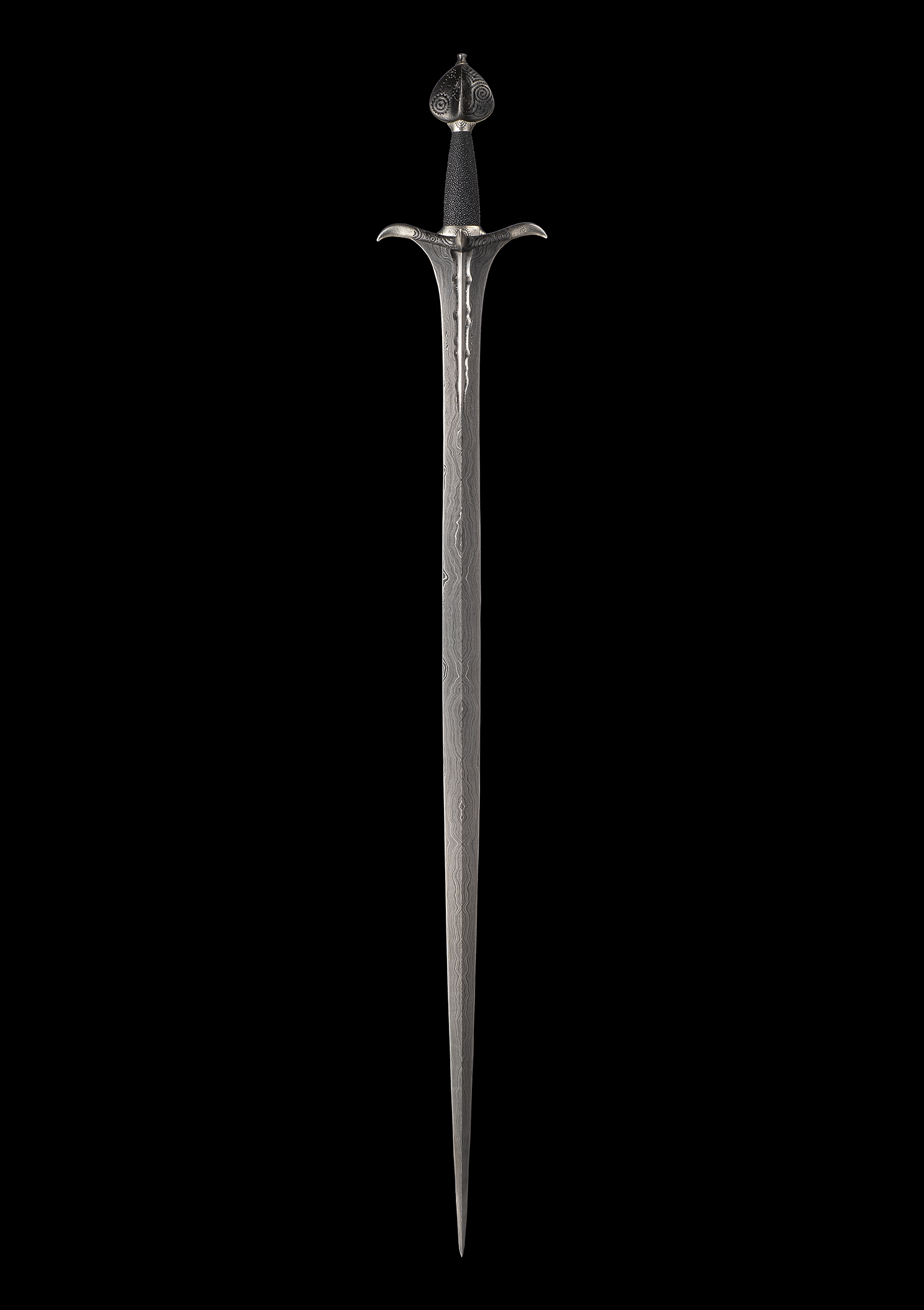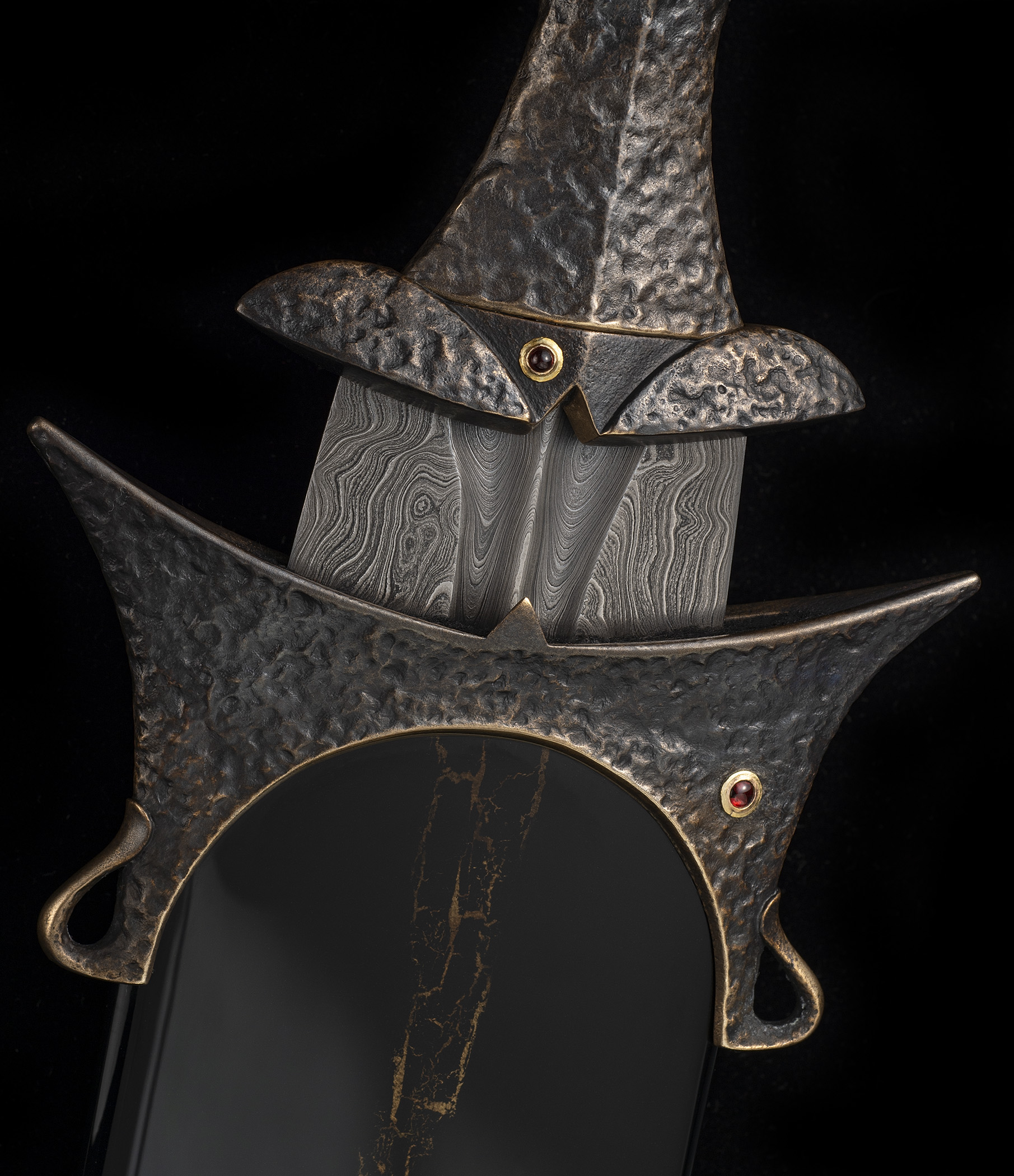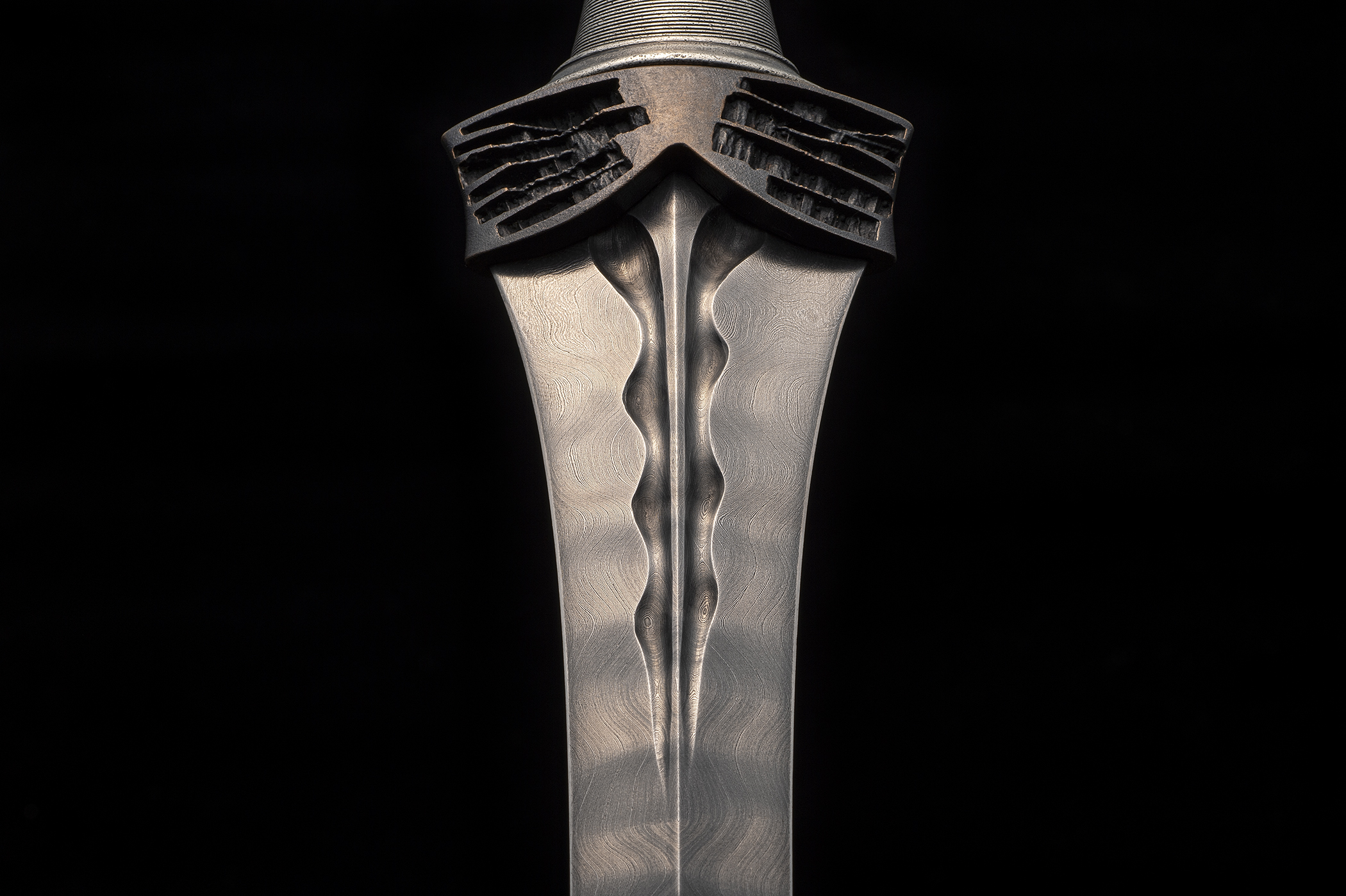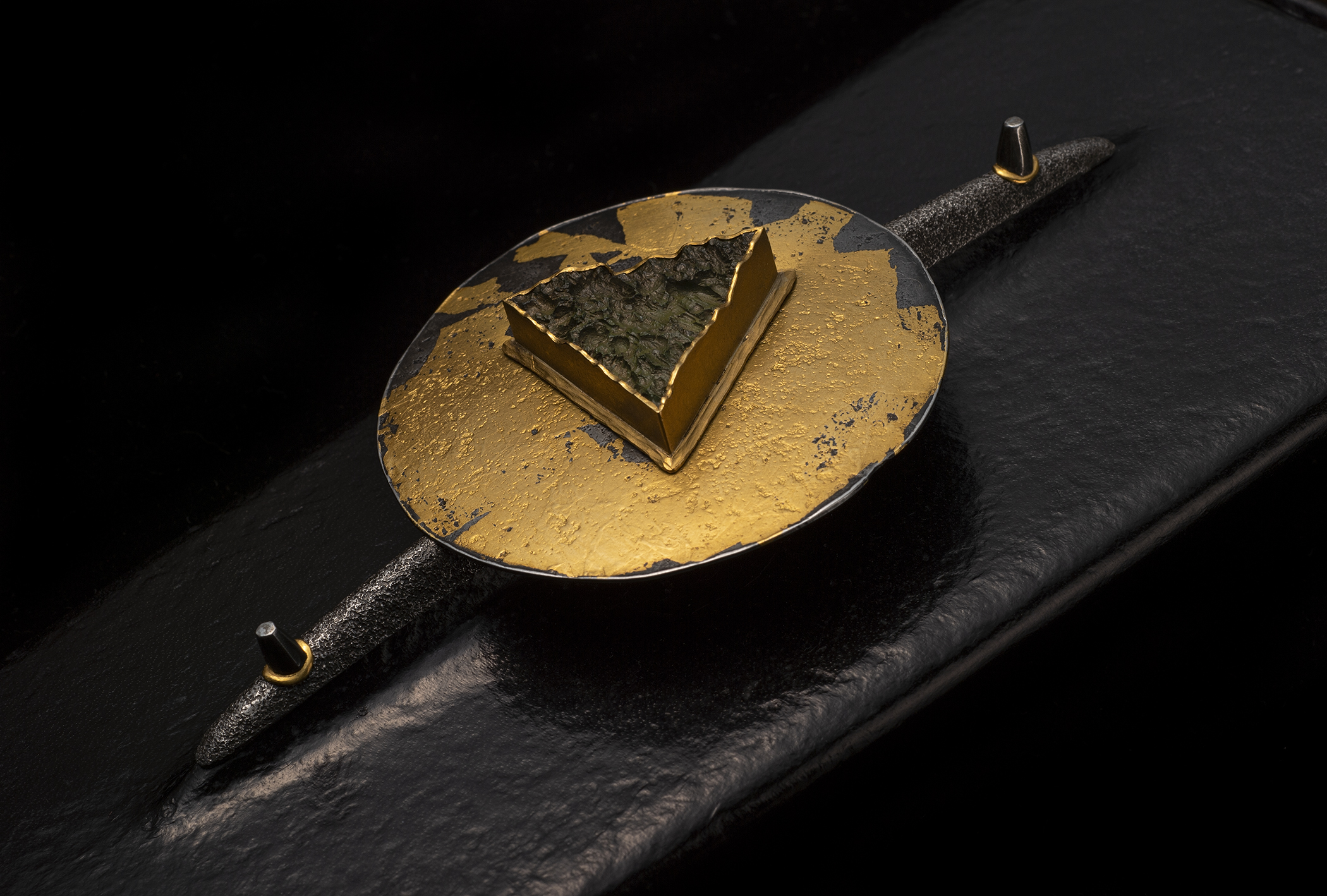THE SWORD
A sword is, first and foremost, a weapon; but it is never only a weapon. It is an object of power, steeped in conflicting ideas and paradoxical to its core. It is also a symbol of mastery of oneself and the intellect’s capacity for discernment. It is an archetype that gives physical shape to some of the most fundamental aspects of the human condition. The project of making swords dedicated to the goddesses was an opportunity to explore these aspects of our nature through myth, weaving abstract contradictions into the work amongst more directly symbolic themes.
These weapons have strong apotropaic associations in their symbolism, often combined with concepts of light and truth as powers to turn away evil forces. There are many examples of the spiritual nature of the sword. In medieval Christian cosmology, the double-edged sword was a manifestation of the Word of God in the battle against the seven deadly sins. Before being invested as a knight, a squire would cleanse himself and spend the night in vigil, contemplating the knightly oath of honesty, bravery and the duty to protect the innocent. These religious and ethical beliefs are reflected in the design and decorations of high medieval swords, which often have religious and magical symbols inlayed in their blades and sometime even relics encased in their hilts to further increase their power as talismans of virtue and prowess. The Japanese Katana is famously regarded as an extension of the samurai´s soul. The Indonesian Keris is a weapon that is associated with magic and symbols, and it is considered to have a spiritual essence that brings good luck or misfortune. The Keris is so strongly connected to personal integrity that it can actually stand in place of its owner during his own wedding ceremony if he is unable to attend. Swords of the sub-Saharan African kingdoms were insignia of rank and status, and they bore a symbolic significance of equal importance to their function as weapons. The Norse warriors of the Viking age revered their swords and often gave them names and regarded them as having personalities and destinies of their own.

The sword is anthropomorphic, not only in its form but also by its nature. The qualities that define an excellent sword are the same that describe a person of good character; the best ones are reliable, sharp, flexible, resilient, balanced and agile. In our rich history of shared mythology, swords are objects that bring transformation and enable the hero to surmount the challenge before him. Theseus retrieves his father´s sword from under a boulder in a test of strength. The weapon later identifies him as the son of the king, which saves him from assassination as an intruder at court. Sigurd is another hero who inherits the sword of his father. He forges the broken shards into a new blade that is used to kill the dragon Fafner. Sigurd narrowly escapes plans on his life by his foster father Regin after receiving a warning from birds who sing about the treachery. Hervor the shieldmaiden defies the undead in retrieving her birthright, the magical sword Tyrfing, whereupon she is undefeated in battle and fights with the strength of twelve men. The sword as a symbol of discernment can be recognized in the poem “Jabberwocky” by Lewis Carroll, where the young hero brings along the Vorpal sword to defeat the chaos monster that is lurking deep in the Tulgey wood.

In its symbolical role the sword combines the idea of honorable defense with notions of glorified violence, revenge and mindless bloodlust. This is a reminder that we can never understand ourselves if we refuse to acknowledge the shadows that dwell outside the light of our consciousness. The sword is therefore an object that compels us to the responsibility of honest reflection. There is an interesting passage written by Cassiodorus, secretary to Theoderic the Great, in a letter to the king of the Varni, expressing gratitude for the gift of some beautiful swords: “…So resplendent is their polished clarity that they reflect with faithful distinctness the faces of those who look upon them. (…)its steely light becomes a mirror of men.” This is something more than a description of highly polished steel. A fine sword can act as a mirror for the person who grasps it, reflecting something of that individual´s character. In this way, swords can be understood to be talismanic, since the power of talismans traditionaly is believed to instill power and amplify inherent qualities of its owner.

Through their design and decoration, swords through history have always been shaped by ideas of the cosmology, the religious beliefs and the morals and values of the culture that produced them. This way, our appreciation and understanding of historical swords is coloured by our views of the time period they come from. To allow for an unfettered or unbiased interpretation, the swords of the Reflections project were given a shape that makes no obvious references to specific types that are distant in time and place. By using combinations of materials and techniques that lie outside the traditional norms, their expression reach to represent something time-less, like the character of the goddesses themselves. Their purpose is to invite contemplation. This may lead to a recognition that reflects something personal in what the sword represents.

